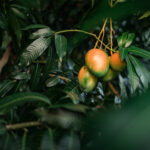Peruvian pitahaya exports reach $1M

Pitahaya, also known as dragon fruit, achieved an important milestone in Peru this year, reaching its first million dollars (FOB) in exports, consolidating itself as a promising crop with great export potential for the Andean country.
To learn more about the industry's rapid expansion, FreshFruitPortal.com spoke with Fluctuante's CEO and commercial director, David Sandoval, who said that “it's a milestone for us to reach the first million dollars in exports. The product is growing and Peru is taking an important role in the industry with momentum.”
“We are seeing that pitahaya is emerging as people are investing in new crops. Some companies are producing and exporting pitahaya since in the pandemic, many withdrew from their pension funds and are now investing in agriculture,” he said.
Guido Álvarez Dávila, an agronomist from Inversiones flor del cáliz SCRL, and a producer and exporter of pitahaya, also spoke on the promising outlook for the industry, indicating that he sees Peru “with a great potential in the cultivation of pitahaya and will become the main exporter of red pitahaya in Latin America.”
Exports
Despite the positive results from growing the fruit on Peruvian soil, Sandoval said they had “strong, but still small” exports in 2023 and 2024.
Currently, the company leading pitahaya exports from Peru is Camposol, which grew by 160% compared to the previous year: “Last year, Camposol made the first commercial shipment; 2020, 2021 and 2022 were for testing to see how long the fruit lasted in transit and if it arrived well.”
Sandoval explained that the first commercial shipment was sent to the Netherlands and that almost all exports this year have been via air. “We are still not exporting by sea,” he indicated.
Achieving the first million dollars in exports has been a joint effort from producers, mainly located in La Libertad since Camposol has 60% of pitahaya exports. Then there are Lima, Ica, Piura, and Lambayeque, regions with good export potential in the coming years.
Markets
Regarding the destination markets for Peruvian pitahaya, David Sandoval explained that the Netherlands represents practically 75% of exports. This is followed by Spain and France, which together account for a total of 90% of exports.
“We can say that we are now focused on exporting to Europe and I hope that the efforts made by the sector can be diversified and we can even send to the United States and Asia, as we do with other products,” said Sandoval.
Challenges
Álvarez Dávila explained that the problem from Peru is in terms of protocols, “because there is no planning certified by SENASA, for the phytosanitary sites that are very important, so that they can carry out the certifications.”
He pointed out that “the protocols that had to be made with the United States, and which we have been promoting for two years, have not yet been fulfilled. In the case of Europe, we already have protocols but we are still waiting for China.”
He also specified that, so far, Peru does not have a certified pitahaya nursery. “They are in the process,” he said.
Another problem is that Peru currently has many varieties, “and if we need a large shipment, we will not ask to comply with small and medium producers, and large entrepreneurs are making varieties that are commercial”.
Projections
Achieving revenues of US$1 million in one year is indicative of a good future. Fluctuante's CEO said pitahaya is supported by the growing demand that exists in the international market.
“There is volume in Peru that is still not being exported, because trees are still growing,” he said.
“I hope that the pitahaya market can mature to such an extent that it becomes as relevant as mango or aims to mimic markets like blueberry, grape, or perhaps avocado. We see it as being in the category of non-traditional products,” he said.
Based on the crop's projections, Sandoval warns that the industry should learn from lessons of other crops, “such as, for example, having an organized supply and having production and export throughout the months so that price is not affected.”
Guido Alvarez said the industry should apply good agricultural practices to obtain sanitary filters. “In Peru, the biggest crops are being grown in the desert and I see a lot of potential in the Madre Dios area. Also, it is close to the Port of Chancay, which can be a boost for the region.”
“It is a long-term project because you have to do things well and not in a hurry,” said Alvarez.
Sandoval concluded by saying “I see potential for pitahaya because there are companies that are betting heavily on it and there are already purchase commitments abroad, mainly in Europe. We have to take great care of the quality of the product because in this way we build customer and consumer loyalty."














































